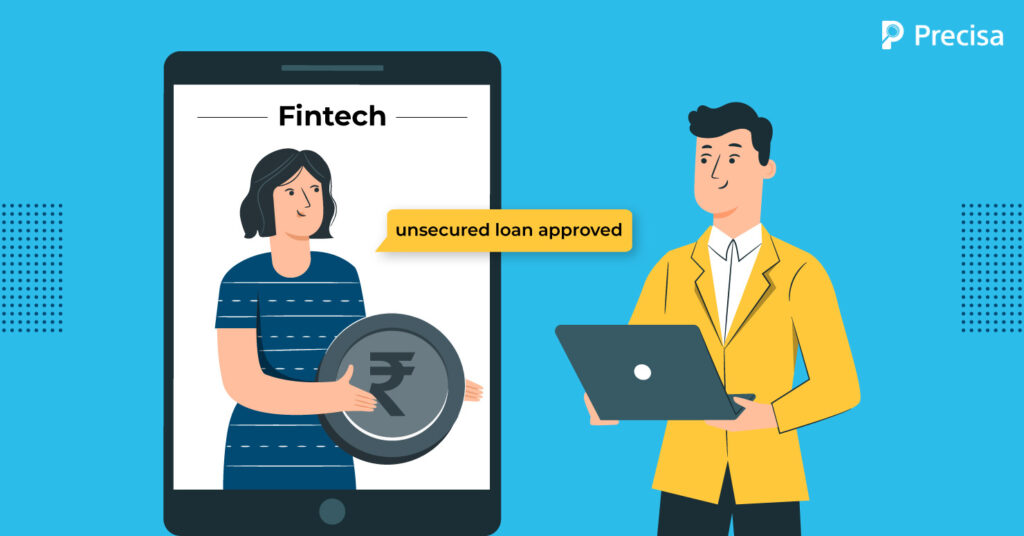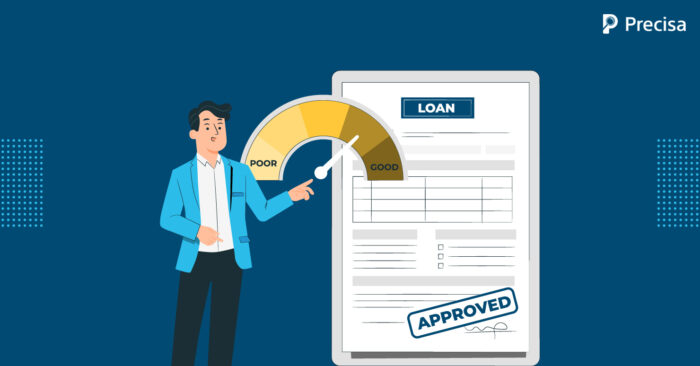Future of Unsecured Loans: Digital Lending vs Traditional Lending

Today, India has over 2,000 fintech companies, which is expected to grow further in the next decade. The arrival of fintech is rapidly transforming the financial services sector in India.
One of the critical areas where fintech companies have garnered traction is the unsecured loan segment, thanks to digital lending.
Before the fintech revolution, businesses and individuals had to rely primarily on traditional lending services to secure loans. The landscape has evolved over the years as digital lending continues to make inroads thanks to the increased adoption of smartphones, support from the government, and other encouraging factors.
In this article, we’ll examine the growing popularity of digital lending and whether it threatens traditional lending in the unsecured loan sector. Is the clock ticking for the old guard?
First, let us understand what we mean by an unsecured loan.
What Does an Unsecured Loan Mean?
Unsecured loans are certain types of loans in which the borrower does not have to provide any security or collateral to secure a loan.
Typically, unsecured loans are granted based on the borrower’s credit history, income, creditworthiness, and more. Since unsecured loans do not need collateral, the interest rates are usually higher than normal interest rates, along with stricter repayment terms.
3 Key Advantages of Digital Lending Over Traditional Lending
Here are a few reasons why we expect digital lending to take over the lion’s share of the unsecured loan segment in the next few years:
1. Convenience
Digital lending platforms have simplified the application process of loans, making it very convenient for borrowers. Borrowers can apply for a loan from the comfort of their homes and offices and receive the necessary funds without physically meeting the lender.
The convenience of fintech platforms is a significant reason borrowers are gradually abandoning traditional lending and swaying toward digital lending alternatives.
2. Speed
Technology plays a very important role in the digital lending sector. Many redundant processes are automated to ensure swift and timely approval and disbursement of loans. Therefore, it has emerged as an excellent alternative for borrowers who require funds immediately.
3. Accessibility
Digital lending has opened up the doors for borrowers who did not have access to traditional lending due to their credit history, location, and many other factors. The arrival of digital lending solutions boosts financial inclusion and also helps more people access and secure hassle-free credit.
Some Challenges in Today’s Digital Lending Sector
While there is little doubt that digital lending has all the elements to replace traditional lending, a few barriers hinder its adoption. Let’s look at some of the most common issues facing this sector.
1. Risk management
Risk management is one of the most notable challenges in digital lending. As digital lenders primarily rely on automated underwriting processes and non-conventional data sources, there is a certain degree of risk involved while approving loans.
This is why many digital lending players seek robust solutions that leverage cutting-edge analytics to determine the borrower’s creditworthiness.
2. Regulatory issues
Since both traditional and digital lenders offer a similar service, they are subject to similar rules and guidelines.
However, digital lenders may need to comply with additional rules specifically for digital lending. Staying afloat with these regulations and complex regulatory environments can become very challenging for digital lenders, especially if they do not have enough resources or personnel.
3. Cybercrime
Digital lenders collect and store sensitive customer data, making them easy targets for cybercriminals. Ensuring the security of their systems and data should be the top priority for digital lenders, as it is very important to protect their customer’s data.
4. Trust and reputation
Digital lenders are still relatively new to the lending landscape, and their reputation is important in building customer trust. Negative reviews or press can tarnish a digital lender’s reputation in no time.
This is why it becomes imperative to provide excellent customer service and be always transparent with their customers.
Despite these challenges, many digital lenders are proactively addressing these issues and working toward creating a sustainable and transparent business model.
Final Words
The traditional lending model in the unsecured loan segment has been in place for many years. However, the emergence of new digital lending alternatives has challenged its legacy.
The future of lending is trending towards digital solutions due to their convenience, speed, and seamless accessibility. While digital lending is gaining momentum, a few challenges still need to be addressed in this space.
Onboarding specialised fintech solutions can help mitigate many of these challenges.
Precisa’s cloud-based automated Bank Statement Analysis tool has several cutting-edge features that facilitate seamless loan sanctioning.
The tool simplifies the process of determining a borrower’s creditworthiness, which in turn leads to faster loan sanctioning. We also provide GSTR analysis and Account Aggregator Integration.
Get a first-hand experience with seamless loan sanctioning. Proceed to the free trial now!



